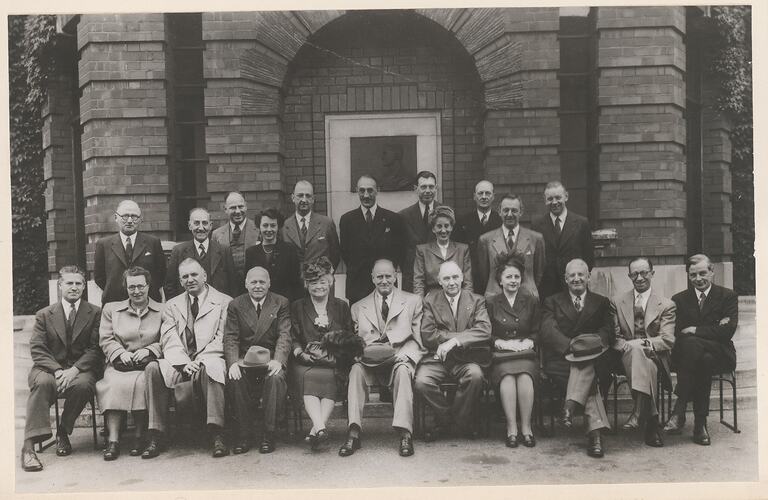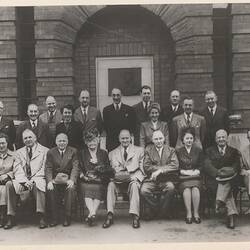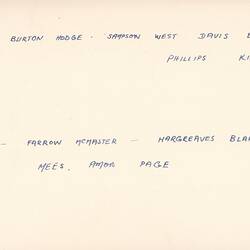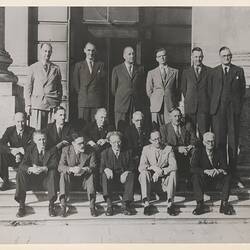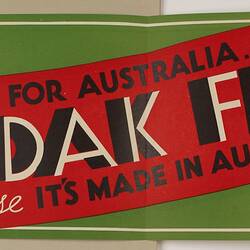Summary
Black and white photograph of staff from Kodak Limited, Harrow, England, taken circa 1950s.
The photograph features over twenty two men and women seated and standing in front of a Kodak factory building, presumably at the Harrow factory in England. A plaque featuring George Eastman's bust is mounted on the building behind them.
This photograph is related to a number of other photographs and a manuscript written by Margaret D Gauntlett, titled 'A History of Kodak Limited', issued by Kodak Limited in Harrow, United Kingdom, 1978 (HT 33653).
Part of a collection of research material and artefacts assembled by former Kodak Australasia employee Nigel Beale while he was writing Kodak's company history in the 1980s.
Kodak manufactured and distributed a wide range of photographic products to Australasia, such as film, paper, chemicals, cameras and miscellaneous equipment. Its client base included amateur and professional photographers, as well as specialist medical, educational, defence, scientific and graphic art professionals who used photography, x-ray and other imaging techniques.
Description of Content
Seventeen men and five women seated on chairs and standing in two rows in front of a brick building. There is an archway in the background with a metal plaque mounted on white stone set within the bricks. Ivy or trees are visible at the sides of the building, and there are several concrete steps behind the rows of people. Several men and women are wearing or holding hats. The men are all wearing suits, some with long coats over their suits. The women are wearing dresses with handbags and hats. The woman in the middle of front row is holding what appears to be a feathered fan.
Physical Description
Black and white landscape photograph mounted on a piece of cream card, with a hinged cover which is also a piece of cream card, attached with sticky tape along the bottom edge of the photograph mount card. The inscription on the covering piece of card only identifies the men in the photograph, not the women. The women are represented by a 'dash'.
More Information
-
Collection Names
-
Collecting Areas
-
Acquisition Information
Donation from Barbara Beale, 07 Mar 2012
-
Organisation Depicted
-
Format
Photograph, Black & White
-
Inscriptions
Covering piece of card, blue ink, handwritten: 'BACK ROW / BRIGHTEN BURTON HODGE SAMPSON WEST DAVIS BARKER / PHILLIPS KING / SEATED / ARNOLD - FARROW MCMASTER - HARGREAVES BLAKE - / MEES. AMOR PAGE'
-
Classification
-
Category
-
Discipline
-
Type of item
-
Keywords
Photography, Manufacturing Plants, Staff, Workers, Portraits, Factories, Making History - Kodak Collection
